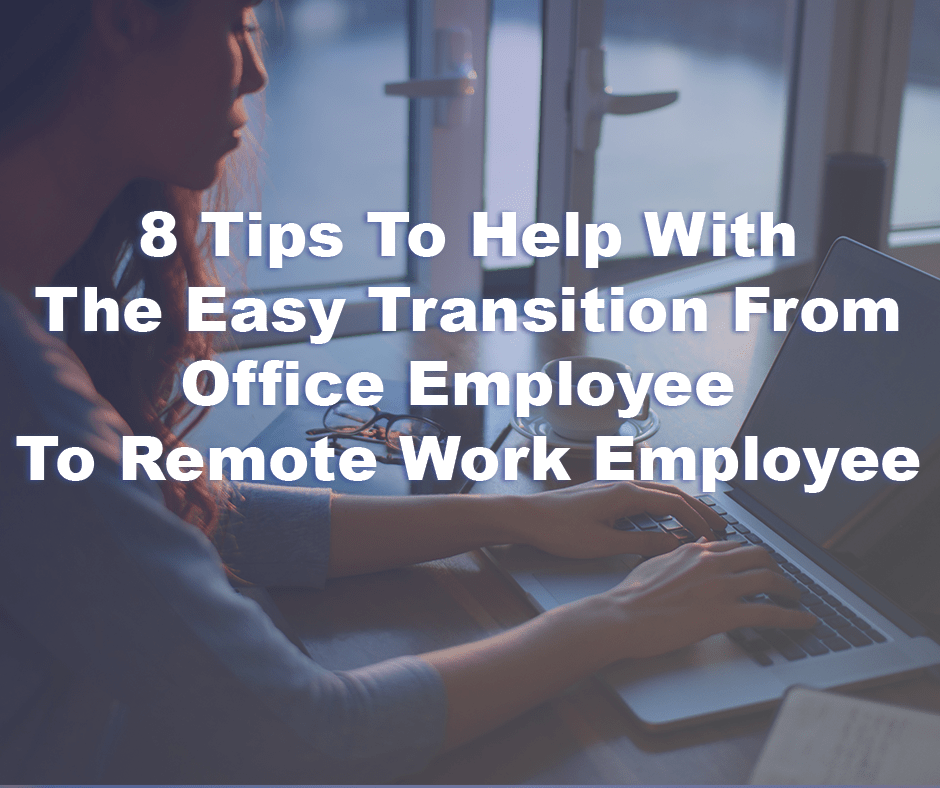Your organization does not need to shut its doors with the panic of a statewide/countrywide quarantine, you can offer a work from home option. With technology today, there is the potential to move non-customer facing operations to remote locations like employee homes for the time being. If this is your first time dealing with remote employees or your first time being a remote employee we have a few tips to make the experience a pleasant one.
Set Up A Designated Work Area
On a normal day, you drive to work, then sit at your designated work spot at work every day. People assume that when they work remotely, they’ll work just as hard on their couch as they would if they were in the office. Some people do, but we suggest putting your work computer in its own area. Working from the couch may be great on the first day, but what about day 10 or day 100. A home office area, even a corner in your dining area can keep you focused and can stop your work life from blending too much into your personal life.
Keep Lines Of Communication Open
Whether your decision to move from an office to a remote is permanent or temporary. Make sure that you and your employees have ways to contact each other beyond email. This could be having an all-hands meeting via GoToMeeting once a week or using programs like Slack for constant IM communications. Communicating with your team is a way to keep your employees in the loop of the situation & aware of what tasks need to be done. It can be easy to feel disconnected from what is going on in the office & the organization, so remaining engaged with co-workers is key.
Ensure Your Network & Work Programs Are Secure
The benefit of having all of your employees at one location is that you only need to worry about protecting one wireless network. With expanding to remote work means the networks your employees connect to need to be secure. Telecommuting introduces another set of potential cybersecurity risks. Make sure you speak with your manager about cybersecurity and strategies you can use for mitigating the risk of a cyber attack while you are working from your home. A basic level of security is having employees remote access their network computers through LogMeIn or other remote connectivity software.
Get Dressed
Since you’re working from home you might be tempted to stay in your pajamas and roll out of bed to your position in front of your computer. Maybe you don’t even plan to get out of bed. (We highly suggest getting out of bed and following tip 1 of this list). We suggest continuing your routine. It has been psychologically proven that the way you dress affects how you work. While you don’t need to dress business casual, you should still take the time to shower, brush your teeth and get ready for the day.
Avoid At Home Distractions
If you’re an easily distracted person or are planning to take this time to catch up on the latest Netflix series, create a space free from those distractions. Remember, working from home is a privilege. Without coworkers and managers constantly checking on you, you are free to do as you please, but your performance may slip. Stay focused on work throughout the day to maintain consistent productivity. Limit the time spent on email, social media and websites unrelated to work. Set a timer on your phone or computer, if necessary.
Self Evaluate
To ensure that telecommuting is working for you, be sure to conduct self-assessments periodically. Things to include in your assessment could include the following:
- What is working as far as your hours?
- What are you accomplishing in the office versus out of the office?
- Are you meeting all of your deadlines?
- Are you feeling connected with your co-workers?
Take Breaks When You Need To
Just like you are encouraged to take breaks while you’re in the office, remember to allow yourself time throughout the day for quick breaks. If you need a short break to gather your thoughts, try walking around the house or down the street, stretching, or making a snack or meal.
If you need to take a longer break, plan your time around this. Working from home has flexibility, but don’t forget to communicate with your supervisor or manager if you’re going to be away from work for longer than usual.
Be Realistic With Yourself About Long Term Work From Home Goals
For many, working from home is a temporary response to the coronavirus. Telecommuting is not meant for everyone. Talk to your manager if you are finding that working from home is causing a negative impact on your productivity or making you feel disconnected or isolated from your team.
Metropolitan Risk is partnered with ThinkHR to help you transition your business from an office to temporary remote operations. If you are looking for help in relation to your insurance coverage during the coronavirus outbreak click here to learn more. If you’re looking for more information on business continuity during the coronavirus outbreak click here. For all other questions contact a Risk Advisor at 914-357-8444.
For More Information on COVID-19 Click Here for Our Resource Guide
